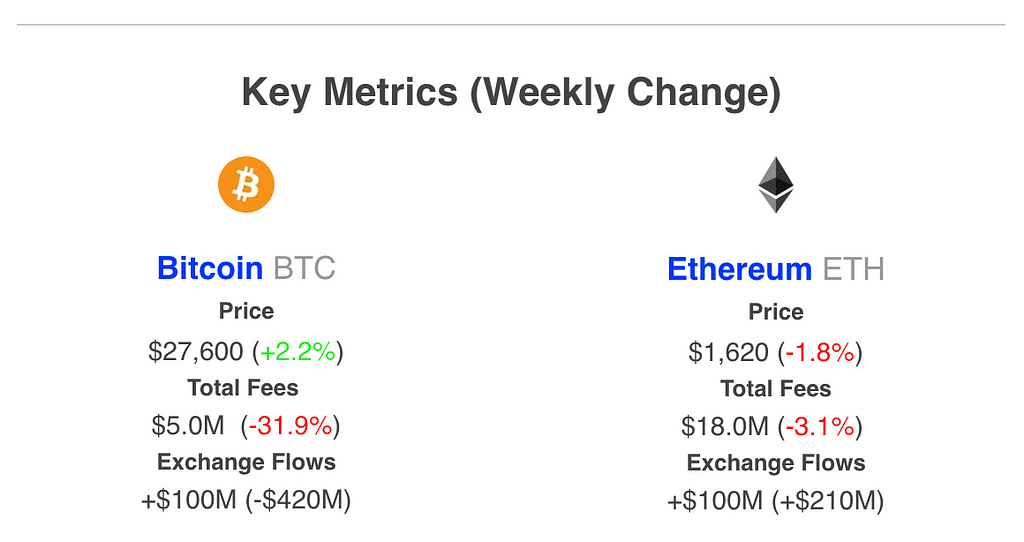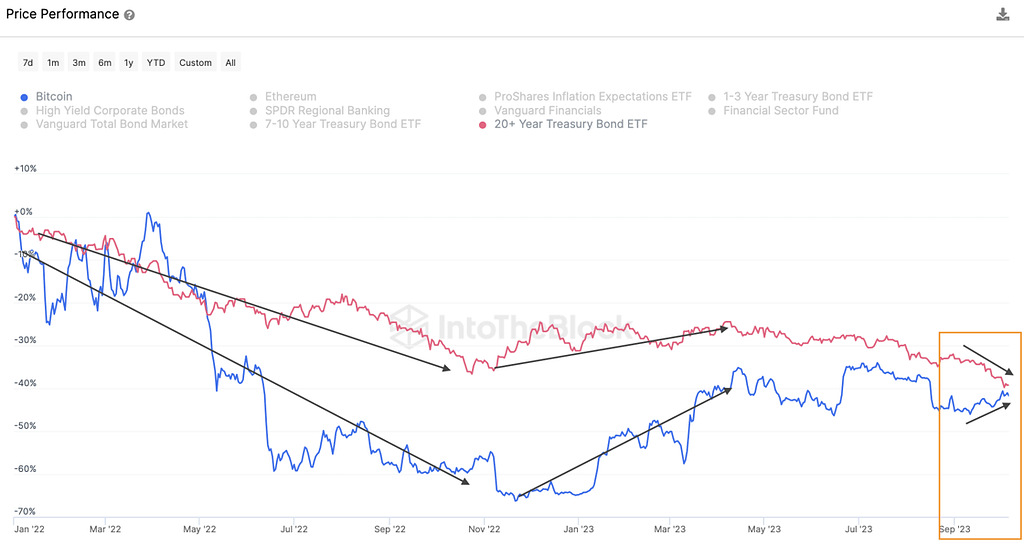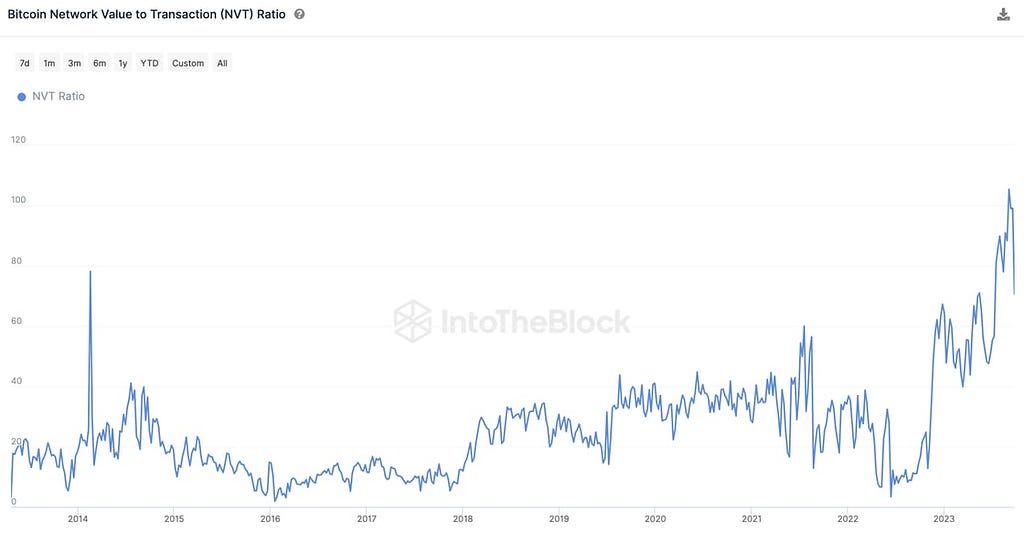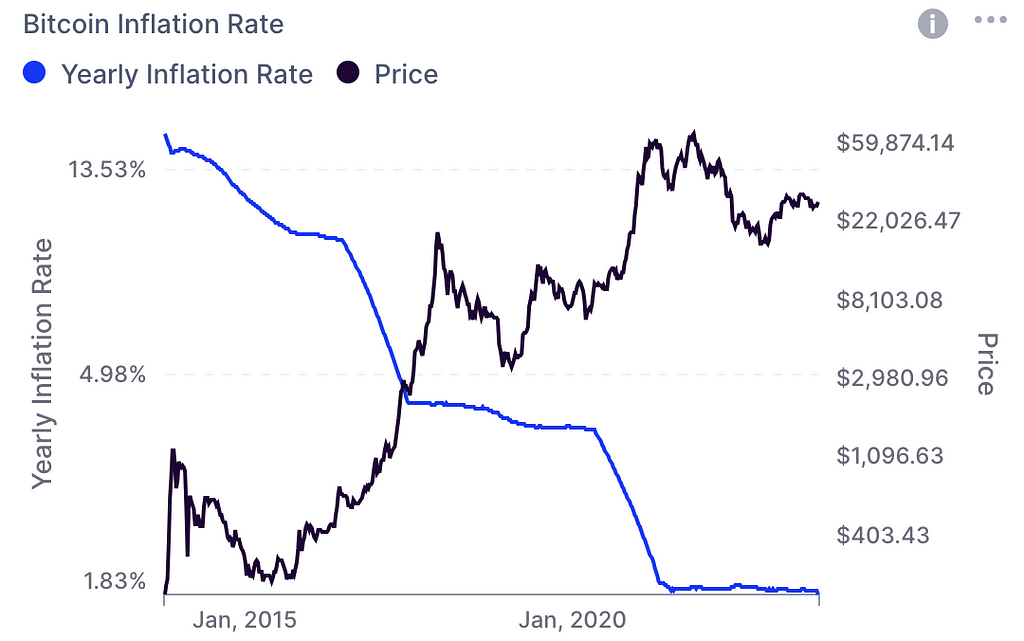Latest news about Bitcoin and all cryptocurrencies. Your daily crypto news habit.
Bitcoin outperforms despite (or because of?) macro woes

Based on IntoTheBlock’s weekly newsletter. If you enjoy it, and would like to receive it every Friday make sure to sign up here!
This week we shift gears into the macro-side of things as bonds continue a historical sell-off, while Bitcoin holds steady. We discuss the implications of this trend, diving into how the market’s valuation of Bitcoin has evolved and how it may be benefitting from the increasing financial instability experienced in 2023.

Network Fees — Sum of total fees spent to use a particular blockchain. This tracks the willingness to spend and demand to use Bitcoin or Ether
- Bitcoin’s fees dropped by 30% this week as ordinals inscriptions and overall transactions decreased significantly
- Fees on Ethereum reached a yearly low with low volatility and general lack of activity on mainnet
Exchanges Netflows — The net amount of inflows minus outflows of a specific crypto-asset going in/out of centralized exchanges
- Both Bitcoin and Ether recorded approximately $100M in net inflows into centralized exchanges this week. Part of these inflows could be tied to FTX selling, with many of their addresses becoming active recently, including unstaking ~$150M worth of SOL
Is the Bond Crash Strengthening Bitcoin?
We are seeing a continuation of the trend we discussed a few weeks ago, where Bitcoin has begun outperforming global markets. Interestingly, many of the catalysts that brought Bitcoin down in 2022 are no longer doing so, hinting at the market reevaluating how to value Bitcoin.

Via ITB’s Capital Markets Insights
Regime Change? The prices of long-term bonds and Bitcoin are no longer moving in tandem despite doing so over the past year and a half. Let’s explore the dynamics at play:
- As the Fed raised rates sharply in 2022, the value of long-term bonds decreased as these yielded much lower rates
- High interest rates also put pressure on Bitcoin and risky assets in general as a) short-term bonds became an increasingly attractive alternative and b) the discount rate for assets’ revenues grew proportionally
- Then as the pace of rate hikes slowed down and discussions regarding a fed pivot began in 2023, both Bitcoin and long-term bonds rallied
- Over the past month this trend has changed: Bitcoin has been rallying while long-term treasuries crash, leading a correlation of -0.74 between the two, the lowest value in over a year
So why is Bitcoin outperforming bonds and why is this important to the average person in crypto? The answer is because the market appears to be reevaluating Bitcoin’s value proposition amid global uncertainty.

Via ITB’s Bitcoin Financial Indicators
From Medium of Exchange to Store of Value — The way the market approaches Bitcoin has evolved significantly over the years
- Initially, when many saw Bitcoin as peer-to-peer cash, the transaction volume processed was a key metric to track Bitcoin’s progress to become a medium of exchange
- The ratio of Bitcoin’s market cap to the value it transacted (the NVT ratio shown above) then became a popular metric to track, showing Bitcoin to be relatively undervalued in the 2015–2016 bear market, where the value of Bitcoin was low compared to the volume it transferred on-chain
- Bitcoin just hit an all-time high in its NVT ratio in September — so is the market indicating that Bitcoin is significantly overvalued?
- Most likely this is not the case; instead this trend suggests that Bitcoin is not valued by investors in relation to its transactional utility, but by something else
In 2023 we have seen demand for Bitcoin pick up as the traditional finance system’s cracks become exposed. In March as Silicon Valley Bank collapsed and the Fed intervened with the BTFP program, Bitcoin’s price rallied by over 20%. Now, as the value of long-term treasuries crash to their lowest since 2007, Bitcoin is holding steady, reversing its previously strong correlation to bond prices.
It may be too soon to begin calling for the bull market, but it is clear that the broader market has changed its tone in regards to Bitcoin.

Via ITB’s upcoming Bitcoin cycles perspectives
Scarce and predictable supply — Bitcoin’s decreasing programmatic issuance is one of the key arguments propelling it as a store of value
- Bitcoin’s annual inflation rate is currently 1.7% and is set to drop to 0.85% in May of 2024
- With the US debt reaching record levels of $33 trillion and rates continuing higher, the risk of financial instability has been growing
- Many macro experts, including ex-Fed trader Joseph Wang and Luke Gromen are now discussing higher chances of a “liquidity event” where markets crash before the Federal Reserve steps in again with the latest iteration to quantitative easing
As with any potential crisis, it is difficult to predict when/if they will hit. The recent bond crash is showing signs of weakness in the traditional banking system, but the extent of it is still unclear. At the same time, it appears the market has reassessed the correlation between bond prices and Bitcoin, seeing greater value in the crypto-asset despite yields heading higher. Ultimately, this appears to be strengthening Bitcoin’s value proposition in an unstable economic environment.
Is the Bond Crash Strengthening Bitcoin? was originally published in IntoTheBlock on Medium, where people are continuing the conversation by highlighting and responding to this story.
Disclaimer
The views and opinions expressed in this article are solely those of the authors and do not reflect the views of Bitcoin Insider. Every investment and trading move involves risk - this is especially true for cryptocurrencies given their volatility. We strongly advise our readers to conduct their own research when making a decision.